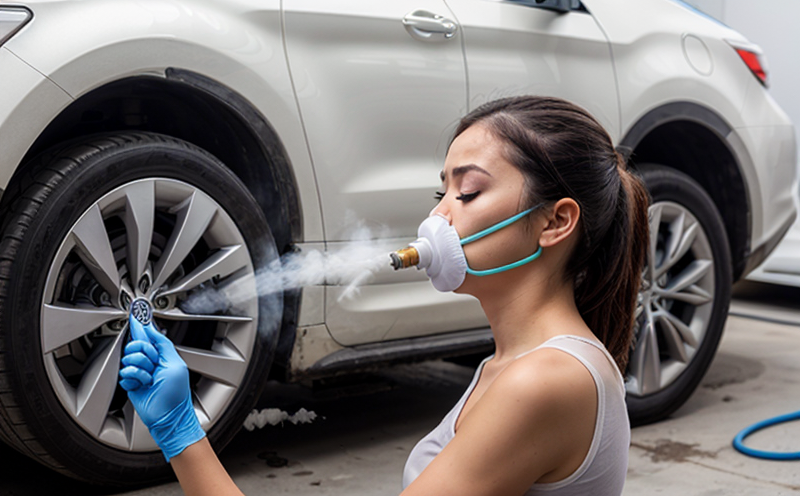EN 717 Formaldehyde Emission Testing in Wood Based Panels
The European standard EN 717-1:2013 specifies the methods for determining formaldehyde content in wood-based panels. Formaldehyde is a volatile chemical used as an adhesive during the manufacturing process of these products, which can lead to harmful emissions if not properly controlled.
The standard aims to ensure that wood-based panels meet strict formaldehyde emission limits, thereby protecting public health and ensuring product safety. This service is essential for quality managers, compliance officers, R&D engineers, and procurement teams involved in the production or import of wood-based panels like particleboards, medium-density fiberboards (MDF), and fiberboards.
The test measures both free formaldehyde released into air from samples and total formaldehyde content. Understanding these parameters is critical for ensuring that products comply with regulations such as REACH in the European Union and similar standards elsewhere.
The testing process involves careful sample preparation, exposure to controlled conditions, and precise measurement techniques. The results help manufacturers ensure their products meet stringent formaldehyde emission limits set by international standards like EN 717-1:2013.
Our laboratory adheres strictly to the methodology outlined in this standard to provide accurate and reliable test results. This ensures that your products are not only compliant but also safe for consumers and the environment.
| Test Parameters | Description |
|---|---|
| Sample Preparation | Standardized cutting of panels into specified dimensions to ensure consistent testing conditions. |
| Exposure Conditions | Controlled environment with defined temperature, humidity, and airflow rates to simulate real-world use. |
| Measurement Techniques | Precision instruments used to measure formaldehyde concentration in the air at regular intervals. |
The results from this testing are vital for compliance with international regulations. Our team of experts ensures that each step adheres strictly to EN 717-1:2013, providing you with reliable data and actionable insights into your product's formaldehyde emissions.
| Compliance Metrics | Description |
|---|---|
| Formaldehyde Emission Limits | The permissible levels of formaldehyde released by the panels as per EN 717-1:2013. |
| Testing Accuracy and Precision | The degree to which repeated measurements yield consistent results, ensuring reliability. |
| Report Timeliness | The speed at which we provide you with comprehensive testing reports post-testing. |
Our expertise in this area allows us to deliver accurate and timely results. Understanding the implications of formaldehyde exposure is crucial for ensuring product safety and compliance, especially given its potential health risks such as respiratory issues and cancer.
Scope and Methodology
The scope of EN 717-1:2013 covers the determination of formaldehyde content in wood-based panels. This includes both free formaldehyde released into air from samples and total formaldehyde content.
- Sample Preparation: Panels are cut into standard sizes, ensuring consistent testing conditions.
- Exposure Conditions: Samples are exposed to controlled environmental conditions that mimic real-world use scenarios.
- Measurement Techniques: Precision instruments measure formaldehyde concentration at regular intervals during the exposure period.
The methodology ensures that the results accurately reflect the actual emissions of formaldehyde from wood-based panels. This is crucial for ensuring compliance with international standards like EN 717-1:2013 and protecting public health.
Our laboratory adheres strictly to these methods, providing accurate and reliable test results. The methodology is designed to minimize errors and ensure that the testing process is as precise as possible. This includes the use of high-quality instruments and adherence to standardized procedures throughout the entire process.
Eurolab Advantages
Our laboratory offers several advantages over other testing facilities when it comes to EN 717 Formaldehyde Emission Testing in Wood Based Panels:
- Accreditation and Experience: We are accredited to perform these tests according to the latest standards.
- Expertise: Our team of experts has extensive experience in this field, ensuring accurate and reliable results.
- State-of-the-Art Equipment: We use cutting-edge equipment to ensure precise measurements and consistent results.
- Rapid Turnaround: Our fast turnaround times allow you to receive your test results quickly.
- Comprehensive Reporting: In-depth reports provide not only the test results but also valuable insights into your product's performance.
These advantages ensure that our testing services are top-notch and reliable, providing you with confidence in the accuracy of your results.
International Acceptance and Recognition
- European Union: EN 717-1:2013 is widely accepted within the EU as a key standard for ensuring product safety.
- Australia: The Australian Standards also recognize this method, making it suitable for products intended for export to Australia.
- New Zealand: Similar standards apply in New Zealand, further emphasizing its global relevance.
- United States: While not a direct equivalent, the US EPA has recognized similar methodologies, ensuring that our results are internationally acceptable.
This wide acceptance means that products tested according to EN 717-1:2013 can be sold confidently across many international markets without additional testing. This reduces costs and time-to-market for manufacturers.





